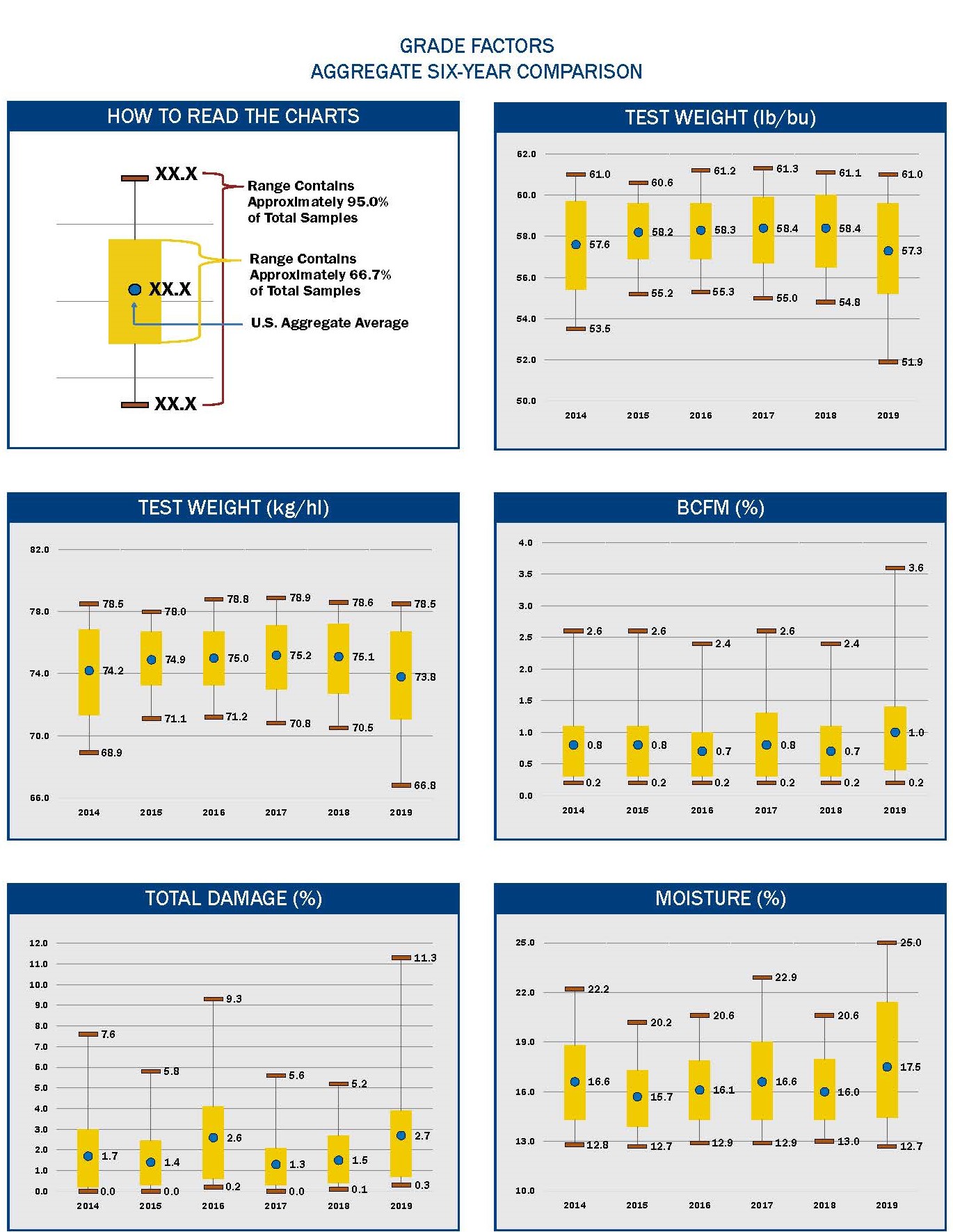Grade Factors
- USDA FGIS has established numerical grades, definitions and standards for measurement of many quality attributes. The attributes that determine the numerical grades for corn are test weight, BCFM, total damage and heat damage. A table with the numerical requirements for these attributes is in the “U.S. Corn Grades and Conversions” section of this report.
Summary: Grade Factors and Moisture
- Average U.S. Aggregate test weight
(57.3 lb/bu or 73.8 kg/hl) was lower than 2018 and 2017 (both 58.4 lb/bu) and the 5YA (58.2 lb/bu). As a result of delayed planting and maturation, only 75.6% of the 2019 samples had test weights at or above 56.0 lb/bu. - Average U.S. Aggregate BCFM (1.0%) was higher than 2018 (0.7%), 2017 and the 5YA (both 0.8%) and but still below the maximum for U.S. No. 1 grade (2.0%).
- BCFM levels in almost all (96.8%) of the corn samples were equal to or below the 3.0% maximum allowed for No. 2 grade.
- Average BCFM differed by no more than 0.4% among all three ECAs.
- Average U.S. Aggregate broken corn (0.7%) was higher than last year (0.5%), 2017 and the 5YA (both 0.6%).
- Average U.S. Aggregate foreign material (0.2%) was the same as last year, 2017
and the 5YA. - Total damage in the U.S. Aggregate samples averaged 2.7% in 2019, higher than in 2018 and 2017 and the 5YA, but below the limit for U.S. No. 1 grade (3.0%). A total of 73.5% of samples contained 3.0% or less damaged kernels.
- The Gulf ECA had the highest or tied for the highest total damage for 2019, 2018, 2017 and the 5YA. The average total damage values in all ECAs were at or below the limit for U.S. No. 1 grade (3.0%).
- No heat damage was reported on any of the 2019 samples, nor in those of 2018, 2017 and the 5YA.
- Average U.S. Aggregate moisture content in 2019 (17.5%) was higher than 2018 (16.0%), 2017 (16.6%) and the 5YA (16.2%). Moisture variability was also higher than the 5YA and the two previous years.
- The 2019 average moisture contents for the Gulf, Pacific Northwest and Southern Rail ECAs were 17.6, 18.3 and 16.0%, respectively. Average moisture level for the Southern Rail ECA was lowest among all ECAs for 2019, 2018, 2017 and the 5YA. There were more high moisture samples in the 2019 crop than in 2018 and 2017, with 45.7% of the samples containing more than 17.0% moisture, compared to 24.7% in 2018 and 36.2% in 2017. This distribution indicates 2019 required more drying than in the previous years.
- With the average moisture content in 2019 higher at harvest than in 2018 and most previous years, extra care must be taken to monitor and maintain moisture levels sufficiently low to prevent possible mold growth during storage and transport.

